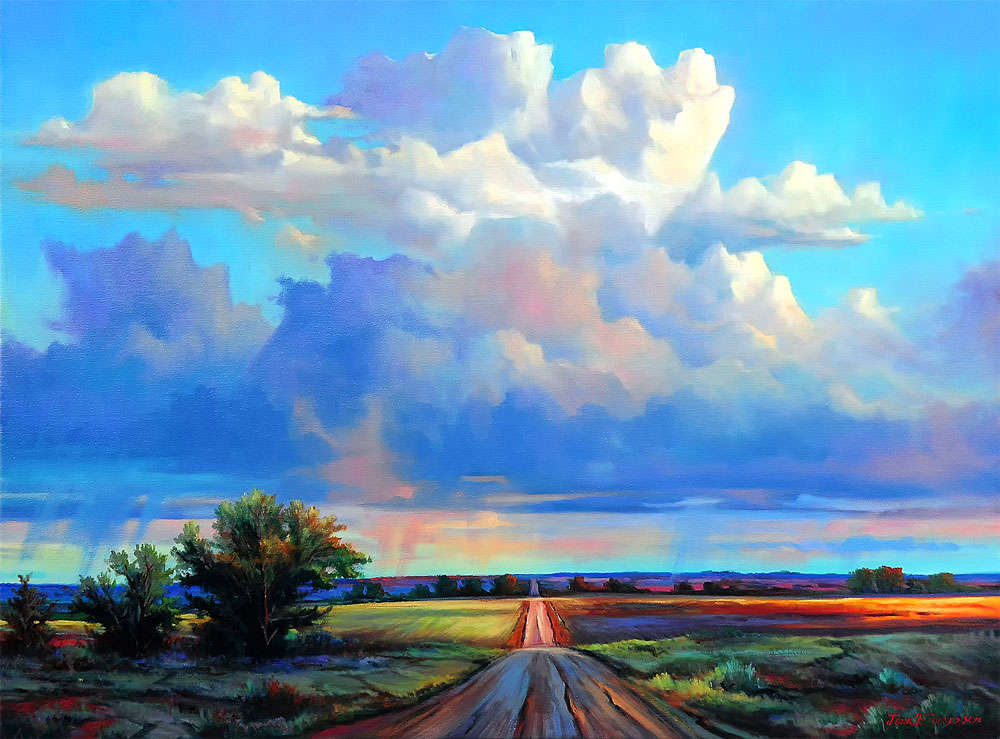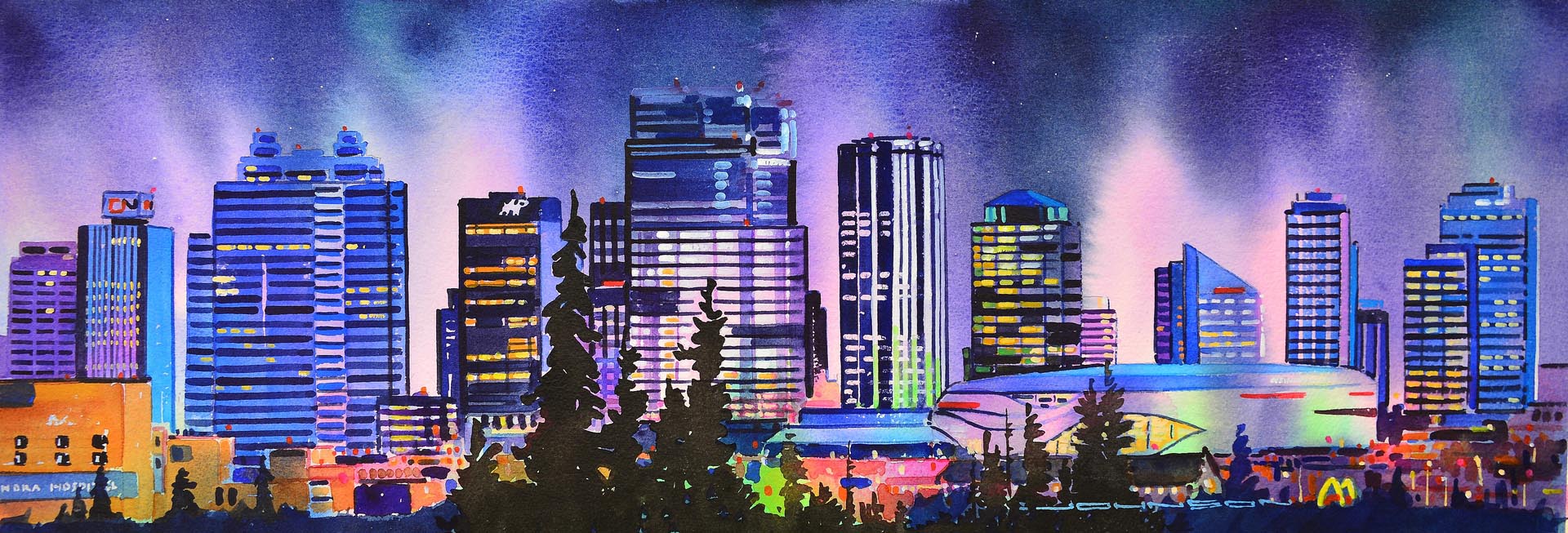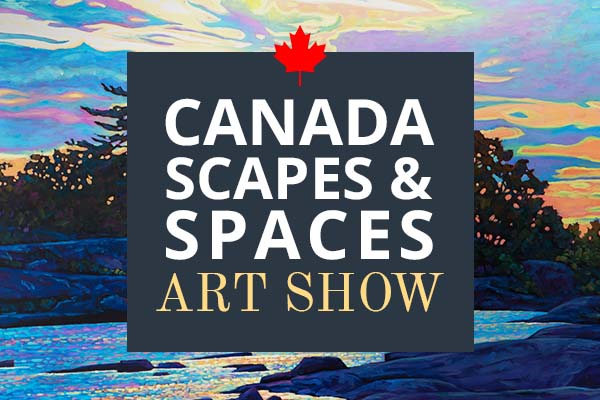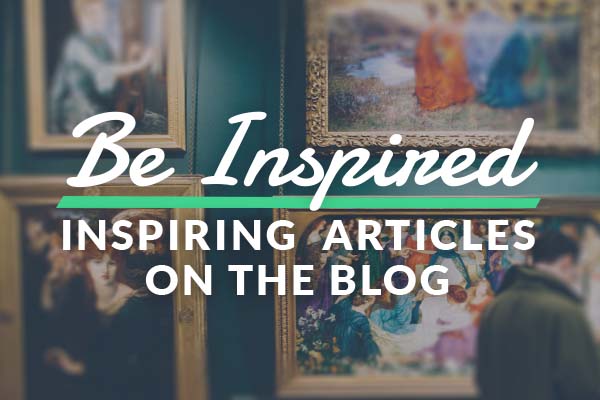Lesson 2
About Art 101 Mini-Course - Understanding the basics of art
In this lesson you will learn:
- What is an oil painting
- What is a watercolor painting
What is an Oil painting
An oil painting is created using paints derived from pigments mixed with oil commonly linseed oil which comes from flax and can be thinned with turpentine, linseed oil and artist grade mineral spirits. The paint tube was invented in 1841 in tin tubes with replaceable caps freeing artists so they no longer needed to grind each pigment by hand and carefully mix the binding oil in the proper proportions. Many modern "paint in tubes" manufactures have extensive color and time testing to determine which paint will last the longest without the colors altering over a period of time.

Summer Shadows by Jonn Einerssen, Oil on Canvas
There are different methods of applying the paint to the painting surface with paint brushes, with many variations, being one of the most popular, palette knives to add a texture to thicker paint and even rags can be used. Surfaces used to paint on are canvas, wooden panel, paper, slate, linoleum and pressed wood. The most popular surface material, since the 16th century, to paint on is canvas. Many artists also used wooden panel through the 17th century however panel was more expensive could warp or split and was heavier to carry around. The artist first prepares the surface material with a primer so that the paint will adhere. Improperly primed or prepared surface material can result in the paint flaking or falling off.
Oil paintings have a long drying time, depending on the thickness and ingredients of paint applied, it can take from a few weeks to years in the drying time for oil paintings.
What is a watercolor painting
A watercolor (aquarelle in French) painting is a painting created by using water-based paint with water soluble pigments. Watercolor paintings date back to the cave paintings of Europe, also used for manuscript illumination (small paintings included in a book) since Egyptian times and into the European Middle Ages, its continuous history as an art medium begins in the Renaissance. Watercolor paint consists of four principal ingredients the pigment which is the color, the binder which fixes the pigment to the painting surface, the additives which help with the durablility or color and the solvent which is used to thin or dilute the paint for application and that evaporates when the paint dries.
Modern watercolor paints are available in two forms: tubes or pans. The majority of paints aquired are in collapsible metal tubes and are formulated to a consistency similar to toothpaste. Pan paints are small dried cakes or bars of paint in an open plastic or metal container and are historically older than tubes but commonly perceived as less convenient however are preferred by landscape or naturalist painters.

Growing Skyline - Edmonton - Gregg Johnson, Watercolour
The traditional and most common surface material used for watercolor paintings is paper and there are various weight, smoothness, texture and qualities used. Watercolor painters typically paint on paper specifically formulated for watermedia applications. The best art papers are designated archival, meaning they will last without significant deterioration for a century or more. Some watercolor papers may ripple and buckle depending on the weight, quality, preparation of the paper and humidity where the painting is installed.
Other surface materials used by watercolor painters include papyrus, bark papers, plastics, leather, fabric, wood, and canvas.
Many artists agree that watercolors are less forgiving as the paint is quickly absorbed into the paper compared to other forms of painting such as oil where scrape off and paint over is an option however watercolors are easier to clean up.
That's it for this lesson. In your next lesson you will learn:
- What is an acrylic painting
- What is mixed media




